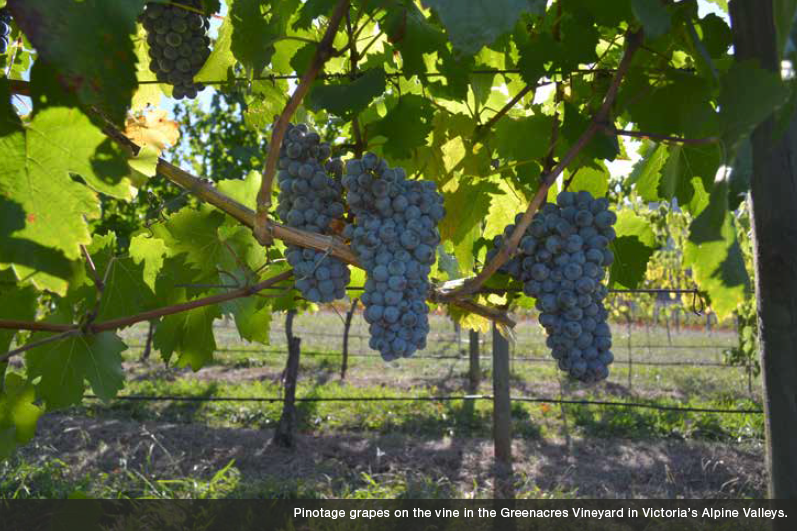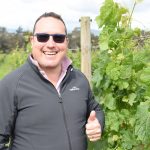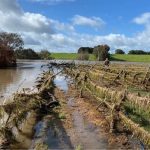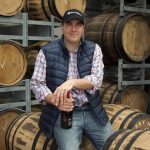By Brian Lewis, Bike & Barrel, Alpine Valleys, Victoria
First published in the …./…. 2019 issue of the Wine & Viticulture Journal. Own by…….
Bike & Barrel produced its first Pinotage in 2013 which won a silver medal on its first outing at
the North East Victorian Wine Challenge.
Greenacres Vineyard was established in the early ‘80s. We took over this property in 2006 with approximately 40 acres
under vine. Situated in the beautiful Alpine Valleys in North East Victoria, the property is raised off the valley floor on
an undulating steep hillside at 300m above sea level. Vine rows are mainly orientated north-south with one eastwest
block.
To this day we continue to supply local wineries with quality fruit and is the main part of our business. Many vintages went by growing Chardonnay, Prosecco, Pinot Noir and Tempranillo, with a burning desire to one day have our own label.
Bike & Barrel was born in 2013. The first step on our journey was deciding what to plant. We wanted something different, new and interesting. With around half-acre blocks allocated, we picked out a handful of varieties that
might work, one of which was Pinotage. I can hear the groans already! Yes, it has history regarding mediocre wine but, as with anything in life, attention to detail will bring reward.
In 2012 we went ahead and fieldgrafted four rows and produced our first vintage the following year. Since then other varieties have followed with Refosco del Peduncolo Rosso, Schioppettino and Fiano planted in 2013. They are all vastly different in both the vineyard and bottle which makes life just that little bit interesting. After a few trials we have settled on the arched cane pruning method for our Pinotage, with a VSP canopy adopted.
The vines are on 101-14 rootstocks and are planted on a free-draining ridge. With such a small block it receives all the necessary inputs needed to produce high-end fruit during vintage.
Pinotage has a tendency to overcrop so yield management is necessary. Shoot thinning was implemented in the first vintages but we noted that the variety is very prone to sunburn which seems ironic given the variety comes from South Africa. So, now we leave behind more canopy and manage yields through bunch thinning which seems to
work best. The variety does not have any major issues viticulturally, but left unmanaged in ideal conditions I think botrytis would have a field day thanks to its large berries, thin skins and tight bunches. Yields are managed to around 2.5 tonnes per acre. Pinotage will ripen very early as we found out in our first vintage, achieving 14 Baume in early February. To aid fruit quality nets are applied once the fruit has finished colouring, complemented by hand picking.
Only three barrels – roughly 70 dozen bottles – are made each vintage. We can be selective during harvest and have
been concentrating on eastern side fruit (morning sun) in the last few years. We feel this fruit benefits the wine due
to not having being exposed to the afternoon warmth, possibly due to one of its parents being Pinot Noir.
After a few vintages under our belt we feel that a target Baume of 14 is ideal for fruit ripeness without resulting in a wine that’s too big. A lighter Pinot style wine has been tried with poor results. Once the fruit has been processed
gently, fermentation will complete without any need for yeast addition, followed by minimal intervention over
the following two to three weeks before pressing. With great colour, it does not benefit from any prolonged skin contact, which I’ve read about, and can lead to some undesirable characteristics. The wine is matured in oak barrique
barrels for around 18 months and receives 30% new oak with another 18 months’ bottle age before releasing.
This format seems to help smooth out the tannin structure. We feel it is a variety that improves with bottle age.
With spicy notes and dark fruits/cherry flavours, it is an interesting wine. We will keep persisting with this variety. We have a few more ideas in mind and plenty of enthusiasm to keep improving it each vintage. We feel it might just have found a new home.
REFERENCES
A…………………
PINOTAGE
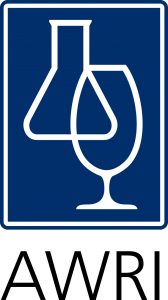
By Marcel Essling, The Australian Wine Research Institute
BACKGROUND
Pinotage (PEE-no-targe) was bred at Stellenbosch in South Africa in 1925 by Professor Abraham Perold.
It was said to be a cross of Pinot Noir (male parent) by ‘Hermitage’ (female parent)—at that time in South Africa,
Cinsaut was known as ‘Hermitage’. This parentage was confirmed by DNA analysis in 2007. The first commercial
planting was made in South Africa in the early 1940s, but the name did not appear on a wine label until 1961.
The global area (2010) is 6404ha, of which 98% is in South Africa where the largest areas are in Malmesbury,
Stellenbosch and Paarl. There are small areas in California (mainly San Joaquin Valley), Brazil, New Zealand, Oregon,
Washington and British Columbia. There are at least seven wine producers in Australia (New England, Granite Belt, Riverland, Alpine Valleys, Yarra Valley, Geographe).
VITICULTURE
Budburst is early to mid-season and maturity is early. Vigour is moderate with an erect growth habit. Bunches
are medium and compact with small thick-skinned berries. Yield is moderate. Pinotage is known as a hardy, easy-to-grow variety in South Africa with moderate susceptibility to fungal diseases. It can be spur pruned.
WINE
Pinotage can produce well-coloured, firm and spicy wines. Descriptors include dark fruits, smoky and earthy. However, wines may have an unpleasant ‘spray paint’ aroma, a consequence of high isoamyl acetate concentration due to excessive water stress or high temperature in the vineyard. Pinotage is often blended (it is a required component in ‘Cape Blends’). It is also used for fortified styles. The reputation of Pinotage amongst winemakers within South
Africa varies considerably, from those who favour it for various reasons, to those who believe that it has no place at all.
